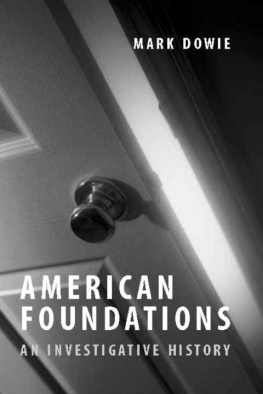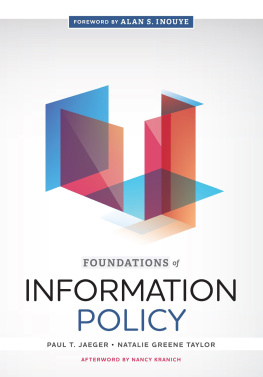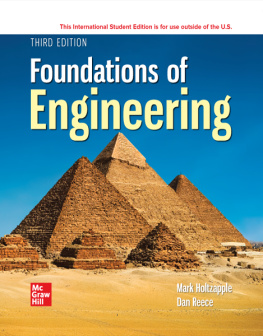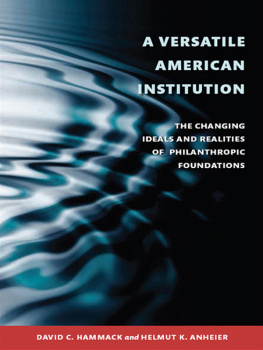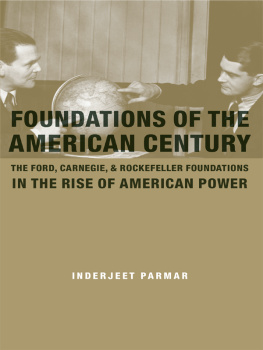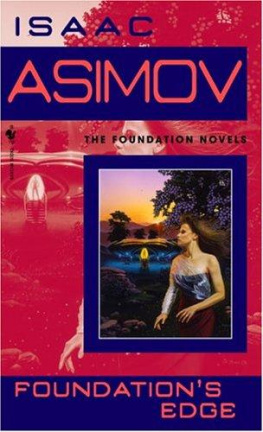American Foundations
American Foundations
An Investigative History
Mark Dowie



To Daniel, Rachel, Mark, Peter, Katina, Riley, and their children.
Contents
ix
xiii
xv
xix
1 1
Preface
A foundation is a large amount of money completely surrounded by people who want some.
-Dwight MacDonald
No one can say for certain what portion of the enormous sums of money economists predict will transfer from one generation to the next over the next twenty-five to fifty years will wind up in the treasuries of philanthropies.' But even a tenth of the most conservative estimate of that wealth transfer-recently projected at somewhere between $41 and $136 trillion-will create a financial tsunami for foundation endowments. However, many of the same economists have discovered that when wealth transfers increase relative to GNP and personal income, the proportion flowing into philanthropic resources also tends to rise. So if the economy remains strong and the tax code amenable, as much as two-tenths of the total transfer of private wealth could end up in foundation endowments.
Twenty percent of $41 trillion, along with a strong securities market, would swell foundation assets by nine or tenfold-to over three or four trillion dollars-by sometime in the second quarter of the century. That combination could well make organized philanthropy the fastest growing financial sector in the economy for the next fifty years; by 2050, foundations could be granting well over $200 billion every year, ten times their $22.8 billion 1999 total. If that happens, the so-called golden age of philanthropy, as the 1990s is sometimes known, will be seen as but a bare beginning.
It is important to keep in mind, however, that as large as it seems on the page, that $200 billion a year will still pale compared to the total given by individuals, if they continue to give at their present level of generosity. In the United States today almost 80 percent of all money provided to various nonprofit organizations is donated by living individuals. Add bequests and individuals, living and dead, account for 88 percent of all philanthropy.
Even then, we should note, the hundreds of billions of dollars received from all nongovernmental sources will not come close to compensating nonprofit social service institutions for the sums lost to them through the devolution of state and federal governments. Nevertheless, conservatives will continue to hold up the growth of private philanthropy as an argument against any redistribution of wealth through taxation. Meanwhile, if poverty persists, foundations will be pressed to abandon all but their charitable activities-which won't come close to solving the problem.
Though philanthropic organizations in America have larger assets than those in any other developed nation, proportionately less of the nation's wealth or income finds its way to the lowest 20 to 30 percent of its population, which possesses an average net worth well under zero. Foundation giving is minuscule compared to the income adjustment that would be required to bring the United States up to the income- and wealthdistribution levels of Europe. In fact, as foundation assets and the charitable sector have grown, so, paradoxically, has the gap between rich and poor.
Whatever the size of the forthcoming wealth transfer, in the foreseeable future foundations will continue their impressive growth. And they will remain at the epicenter of an emerging national debate over the meaning, legitimacy, and purpose of private philanthropy. As government shrinks and a fiscally starved nonprofit sector looks to private philanthropy for relief, foundations-which have historically seen their function as the identification of root causes rather than outright charity-have become a subject of public controversy. In this book I examine their history, explore the debate over their character, and propose a number of ways to preserve foundations' unique role as seekers of root causes.
Much of the contemporary literature on philanthropy-by writers like Waldemar Nielsen, Frederick Keppel, Ellen Condliffe Lagemann, Ben Whitaker, James Smith, Judith Sealander, Barry Karl, Teresa Odendahl, Michael Lerner, Dennis McIlnay, Stanley Katz, and F. Emerson Andrews, to name only a few-focuses principally on the grantmakers. It describes the inner workings of large foundations, the intentions of donors, the role of trustees, and the evolution of a field sometimes called philanthropic science.
While I have learned much from this literature, my own approach is quite different. I examine foundations from the public perspective, describing how their large-scale philanthropy has affected the fields of human endeavor they have supported over the past century. Although foundations and their subculture are intriguing, and not well understood, it is their impact on the rest of American society that demands our attention. I therefore leave study of the internal operation and mores of organized philanthropy to the anthropologists and focus my inquiry principally on the foundations' impact on several of the intractable challenges facing America at the end of the "American century."
The archives of philanthropy that are being opened to public view, slowly, one foundation at a time, are treasures of unrecorded history. Although ponderously boring, and carefully screened and edited before release (usually twenty years after the date of a given document), they contain exciting nuggets of information, even an occasional smoking gun. Many of the documents I examined had never been read by outsiders, though they had been sitting in open files for ten years or more.
It is from these documents, along with over two hundred interviews I conducted with foundation officers, critics, and recipients of their largess, that I created the heart of this book. That is its investigative component. The rest is essay.
Acknowledgments
My special personal thanks go to Alan Abramson, Nelson Aldridge, Judy Austermiller, Peter Bahouth, Harriet Barlow, Peter Barnes, Judith Bell, Lucy Bernholtz, Gwenda Blair, Bob Bothwell, Wendell Breuner, Claudia Callender, Connie Casey, Michael Caudel-Feagan, Ralph Cavanagh, Roberta Clark, Sally Covington, Gene Coyle, Sophie Craighead, Claire Cummings, Jodi Curtis, Alan Divak, Bill Domhoff, Pat Dondonoli, Leonard Duhl, Alvin Duskin, Sharon Dynak, Pablo Eisenberg, Jed Emerson, Diane Feeney, Carol Ferry, Michael Fischer, Frances Fitzgerald, Chryseis O. Fox, Tracy Gary, Arlene Goldblatt, Peter Goldmark, Jane Gordy, Jonathan Green, Elizabeth Guheen, Herb Gunther, Ellen Gurzhinsky, Carol Guyer, Charles Halpern, Hal Harvey, Winona Hauter, Nancy Hechinger, Robert Herdt, Anne Hess, David Himmelstein, David Hunter, Warren Ilchman, Craig Jenkins, Daniel Kevles, Mark Kramer, Marty Krasny, John Kreidler, Anne Krumboltz, Arun Kashyap, Herb Kutchins, Tom Layton, Bokara Legendre, Helaine Lerner, Michael Lerner, Lance Lindblom, Dick Magat, Jerry Mander, Rob McKay, Bill Mergener, Ellen Miller, Sandra Minkkinen, Clay Morgan, David Morris, David Mortimer, Bill Moyers, John Moyers, Brian Murphy, Pete Myers, Waldemar Nielsen, Michael Northrop, Terry Odendahl, David Olsen, Todd Oppenheimer, Louise Ottinger, Stacey Palmer, Richard Parker, John Perkins, Raymond Plank, Nancy Rader, Betsy Reed, Mark Ritchie, George Roberts, Wally Roberts, Tom Rosenbaum, Peter Rosset, Rusty Russell, J. A. Savage, Tom Schlesinger, Wendy Schwartz, Peter Shifter, Bill Shutkin, Tom Silk, Ed Skloot, Jim Smith, George Spencer, Vince Stehle, David Stern, Francis X. Sutton, Betsy Taylor, Marty Teitel, Gary Toenniessen, Tom Van Dyck, Enza Vescera, Steve Viederman, Tobiah Waldron, Marian Webber, Albie Wells, Curtis Wilkie, and Sid Wolfe. Will those whom I have forgotten please forgive me?

